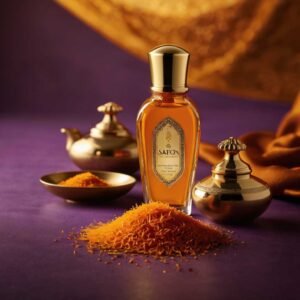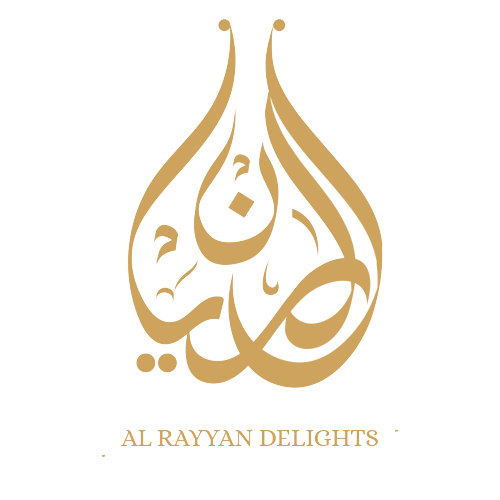Discover the Best Saffron in Al Rayyan: A Complete Guide
I. Introduction to Saffron
A. What is Saffron?
Saffron is one of the most precious spices in the world, derived from the flower of Crocus sativus, commonly known as the saffron crocus. This vibrant red spice is made from the stigma of the flower and is renowned for its unique flavor, color, and aroma. A tiny amount can elevate a dish, turning even the simplest recipes into gourmet experiences.

B. History and Cultural Significance of Saffron
Historically, saffron has been valued not just for its culinary attributes but also for its medicinal properties and dyeing abilities. It has been used since ancient times across various cultures, from ancient Persia to Indian cuisine, and has woven itself into the fabric of culinary traditions around the world. In some cultures, saffron is even associated with luxury and celebration.
C. The Growing Importance of Saffron in Culinary Arts
As the global culinary scene evolves, saffron has gained popularity among chefs and home cooks alike. It adds a rich and complex flavor to dishes ranging from risottos to desserts, making it a beloved ingredient. In Al Rayyan, where culinary creativity is vibrant, saffron is often incorporated into local cuisine, showcasing its versatility.
II. The Farming of Saffron in Al Rayyan
A. Climate and Soil Conditions
Al Rayyan’s unique climate, characterized by hot summers and mild winters, offers an ideal environment for saffron farming. The region’s well-drained sandy soil, rich in organic matter, plays a vital role in producing high-quality saffron, contributing to its exceptional flavor profile and vibrant color.
B. Traditional Cultivation Techniques
Farmers in Al Rayyan often employ traditional methods that have been passed down through generations. These practices include careful planting of saffron bulbs and maintaining the right amount of water. It’s fascinating to see how modern saffron growers blend these age-old techniques with contemporary knowledge to optimize their yields while ensuring sustainability.
C. Harvesting and Processing Methods
Harvesting saffron is a meticulous process that occurs during the blooming season, typically in October and November. Each flower blooms for just one day, making timing crucial! Farmers pluck the delicate stigmas by hand, gently separating them from the petals. After harvesting, the stigmas are dried to preserve their flavor and color, a process that requires precision and care.
III. Identifying Quality Saffron
A. Characteristics of High-Quality Saffron
High-quality saffron is characterized by deep red color and a strong, pleasant aroma. If you consider the taste, it should evoke a slightly sweet, earthy flavor. When you rub it between your fingers, quality saffron will leave a bit of color on your hands while low-quality versions may not.
B. Common Adulterations and How to Spot Them
Unfortunately, saffron is often adulterated with other substances to increase weight and volume. Be cautious of saffron strands mixed with dyed corn silk or turmeric. A simple test is to soak saffron in warm water; pure saffron releases its color while adulterated versions often don’t.
C. Certification and Standards for Saffron Products
In Al Rayyan, reputable saffron vendors usually adhere to local and international standards for saffron quality. Look for certifications that assure you of the product’s purity, such as ISO certification or indications from local agricultural authorities.
IV. Where to Buy Saffron in Al Rayyan
A. Local Markets and Stores
Al Rayyan is home to various bustling markets, where you can find fresh and authentic saffron. One popular spot is the Al Rayyan Market, where local vendors offer high-quality saffron along with knowledge and stories about their products. Engaging with vendors can also provide insights into selecting the best saffron.
B. Online Vendors and Delivery Options
For those who prefer shopping online, several vendors offer saffron with delivery options in Al Rayyan. Make sure to do your research; look for customer reviews and check whether they provide details about the saffron’s sourcing and quality.
C. Tips for Buying Saffron Safely
When buying saffron, whether online or in-person, always ensure that the vendor provides information on the product’s origin. Don’t hesitate to ask questions and request samples if you can. Always keep an eye out for price; if the deal seems too good to be true, it probably is!
V. Cooking with Saffron
A. Traditional Recipes Featuring Saffron
Saffron shines in many regional dishes. Consider trying vegetarian paella, where saffron imparts a lovely golden hue and a depth of flavor. Or explore the world of desserts by making saffron-infused rice pudding, a comforting treat that will delight your palate.
B. Enhancing Dishes with Saffron: Dos and Don’ts
When cooking with saffron, remember: less is more! Soak the strands in warm water or broth before adding them to your dish to release their flavor. Avoid overpowering the spice; a little goes a long way! Steer clear of adding saffron too early in the cooking process, as prolonged heat can diminish its flavor.
C. Health Benefits of Saffron
Saffron is not just a culinary gem; it also boasts several health benefits. It’s rich in antioxidants and has been associated with mood-enhancing properties. Some studies suggest that saffron might help improve mood and aid digestion.
VI. Conclusion
A. Summary of Key Points
From its deep-rooted history and vibrant flavor to its careful cultivation in Al Rayyan, saffron is a spice that deserves a place in everyone’s kitchen. Knowing how to identify quality saffron and where to find it can greatly enhance your cooking experience.
B. The Future of Saffron in Al Rayyan
With the growing interest in local and organic ingredients, the future for saffron farming in Al Rayyan appears promising. As more consumers become aware of its origins, we can expect a rise in sustainable, community-supported saffron cultivation.
C. Recommendations for Saffron Enthusiasts
Whether you’re a seasoned chef or a curious home cook, experimenting with saffron can open a world of flavors and therapeutic benefits. Start slow, savor the flavor, and enjoy the enchanting experience saffron brings to your meals!
VII. Frequently Asked Questions (FAQs)
A. How can I tell if my saffron is genuine?
The best way is to look for vibrant red stigmas with a strong aroma. Be cautious of overly cheap options or those that appear more orange or yellow, as these may be mixed with inferior products.
B. What is the best way to store saffron?
To keep your saffron fresh, store it in an airtight container away from light and heat. A cool, dark place like a cupboard or pantry is ideal.
C. Can saffron be used for medicinal purposes?
Yes! Saffron has been used in traditional medicine for conditions like depression, inflammation, and digestive issues. However, consult with a healthcare provider before using saffron for medicinal purposes.

